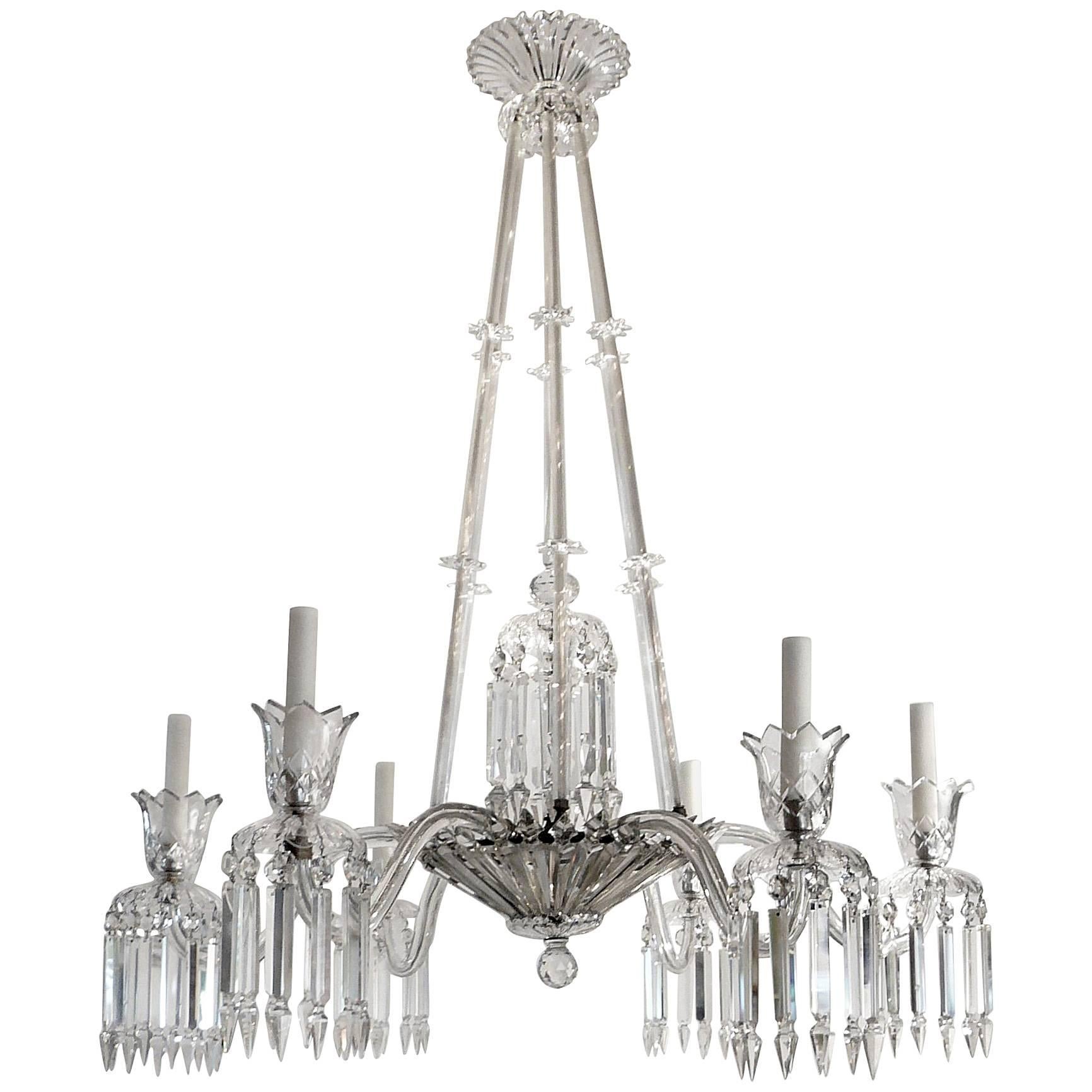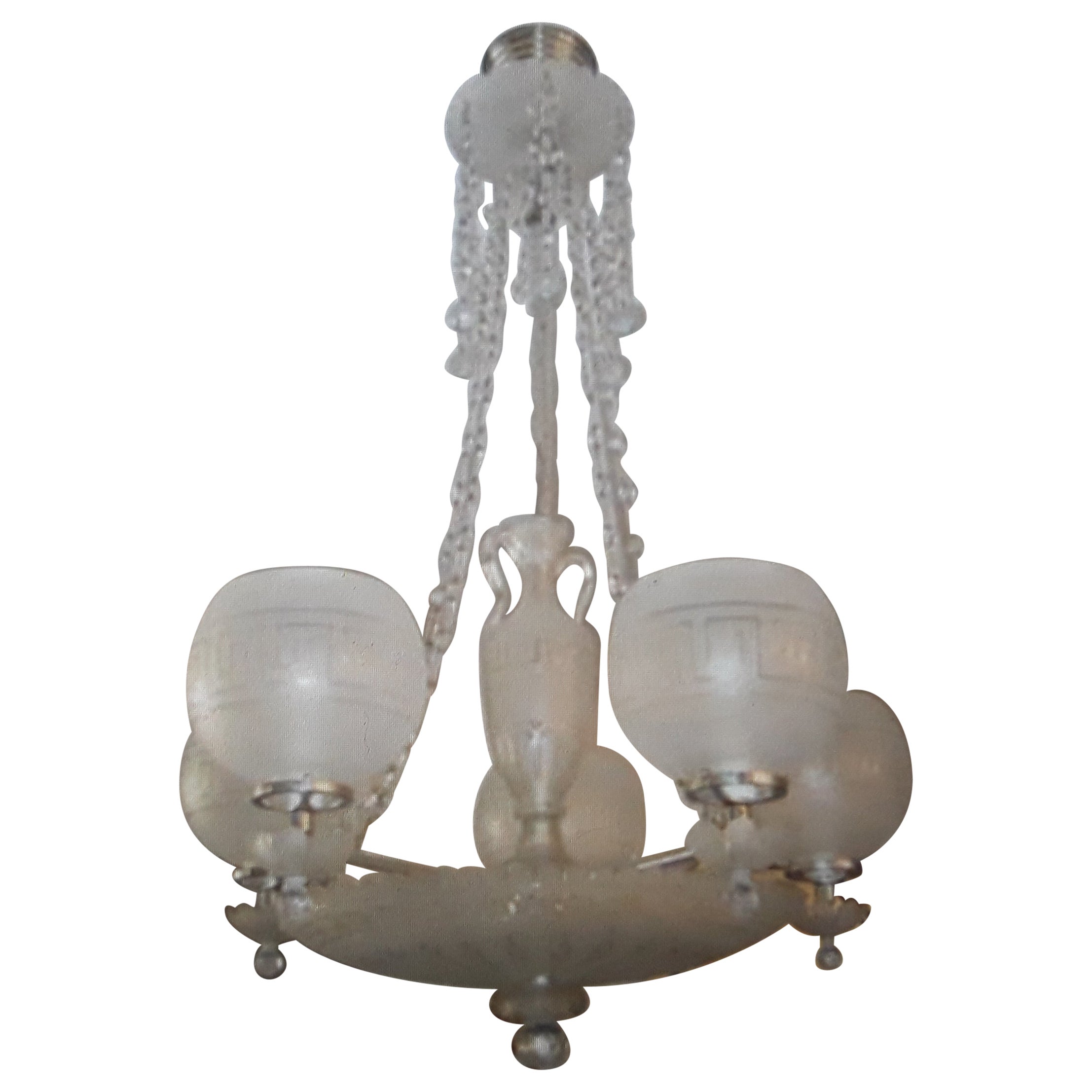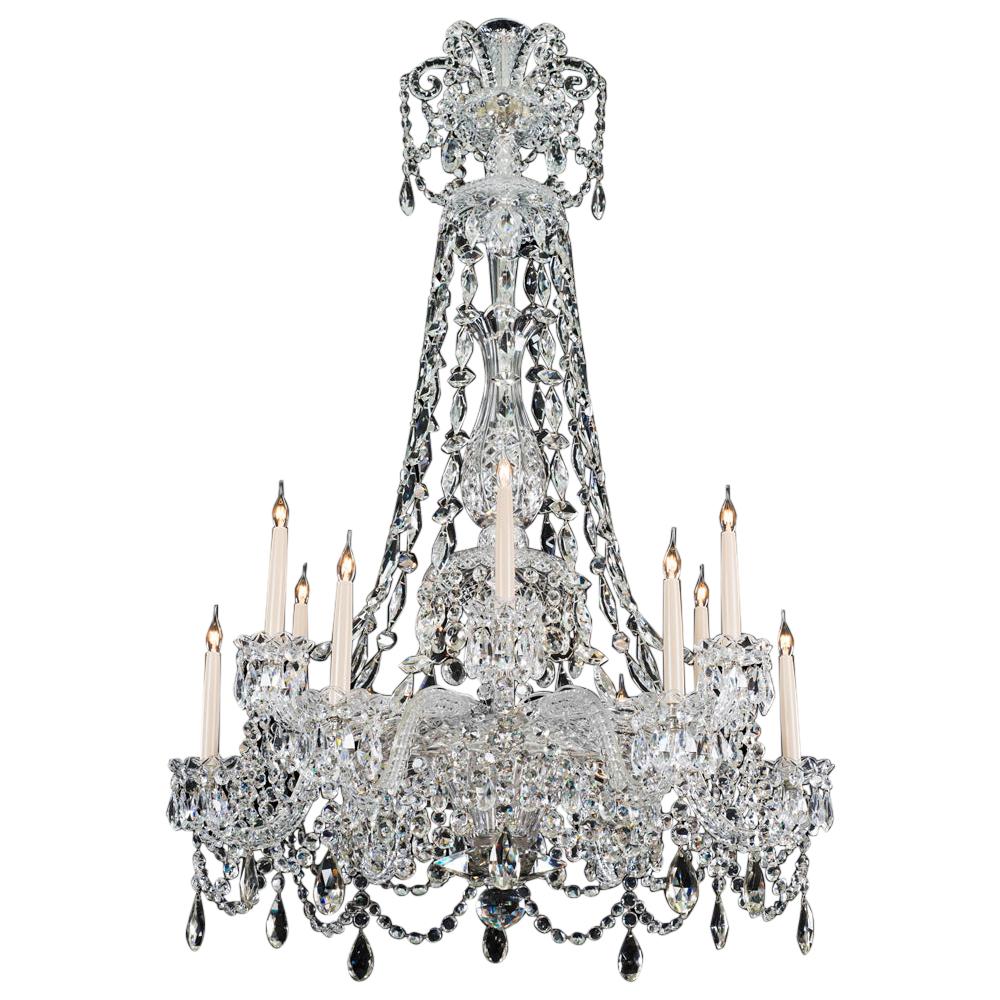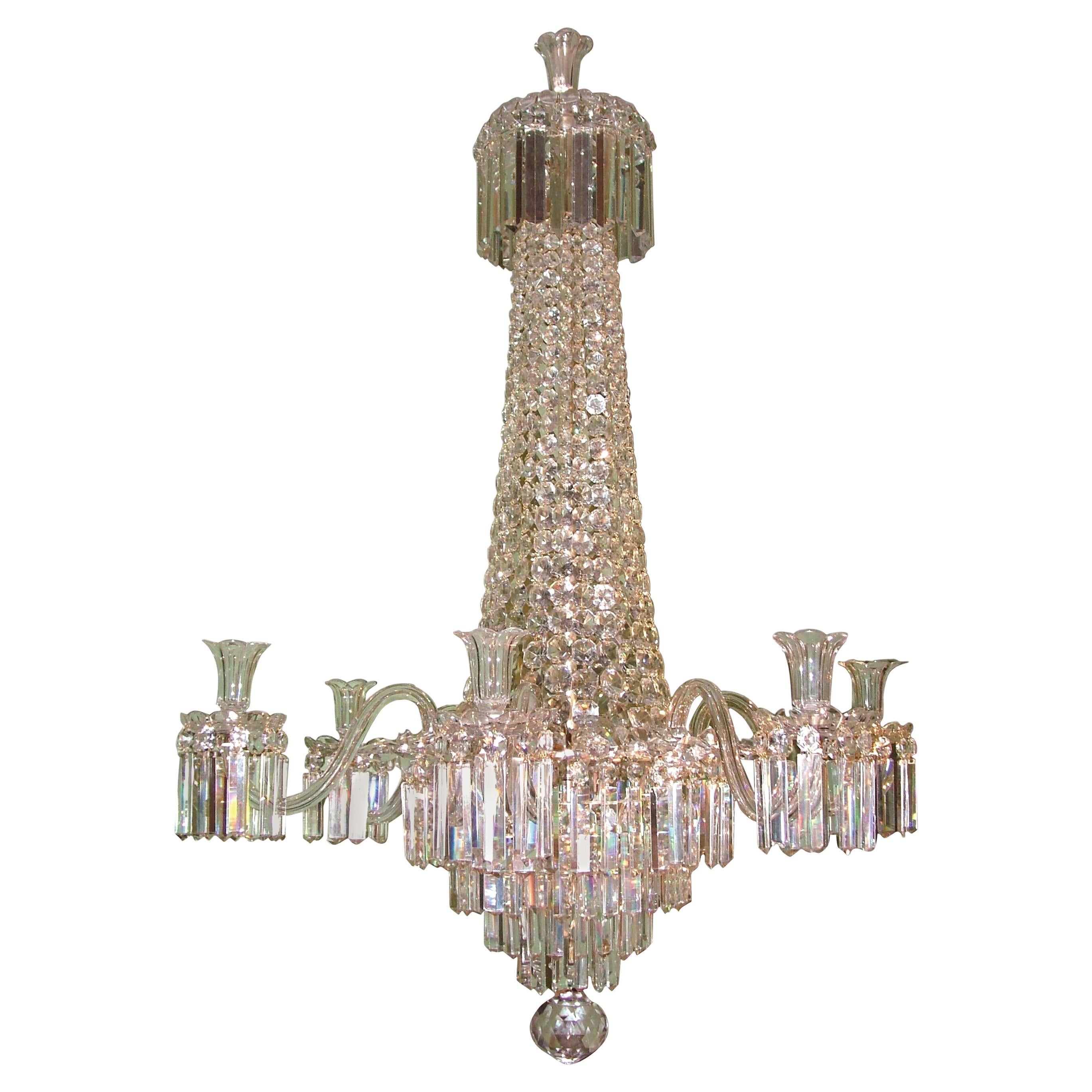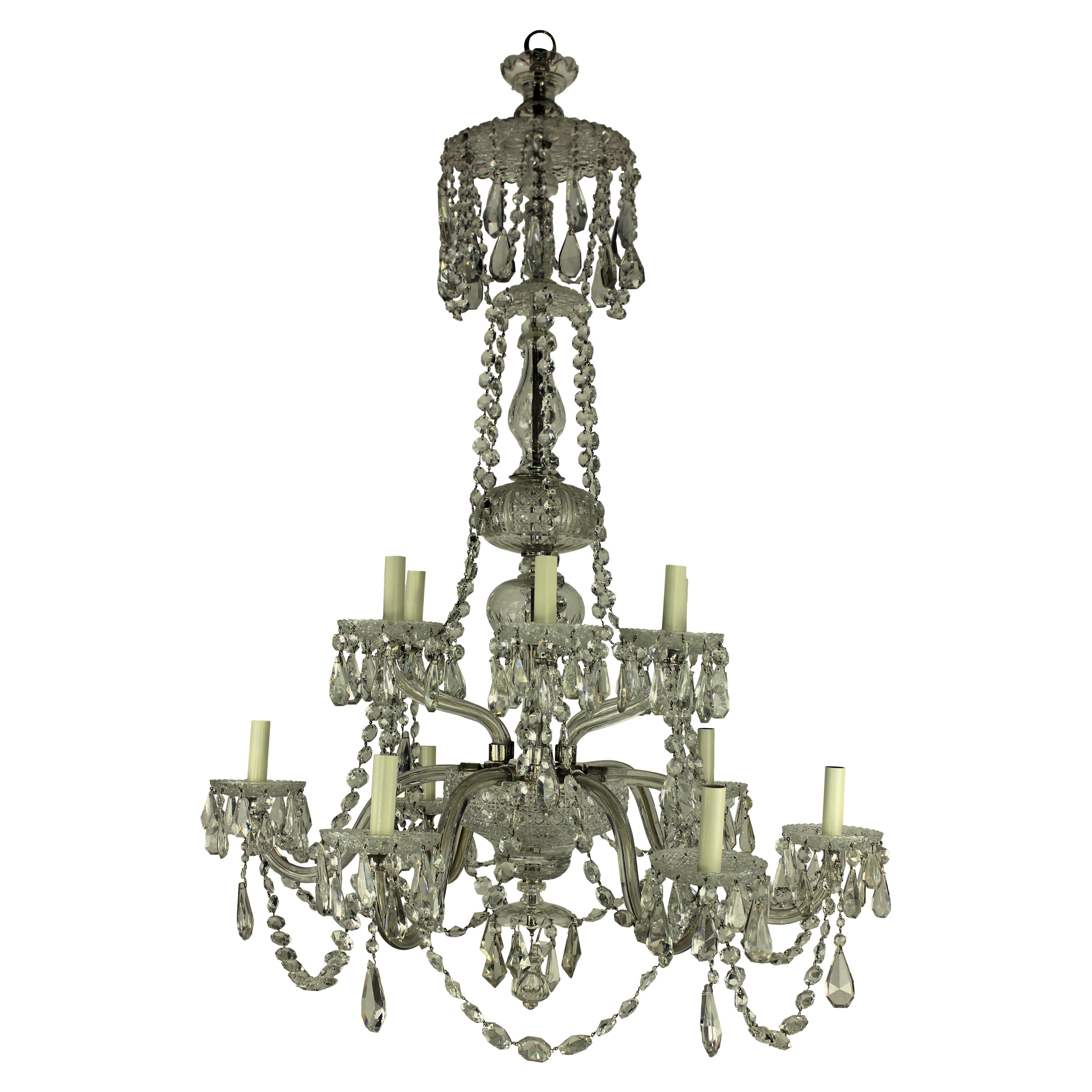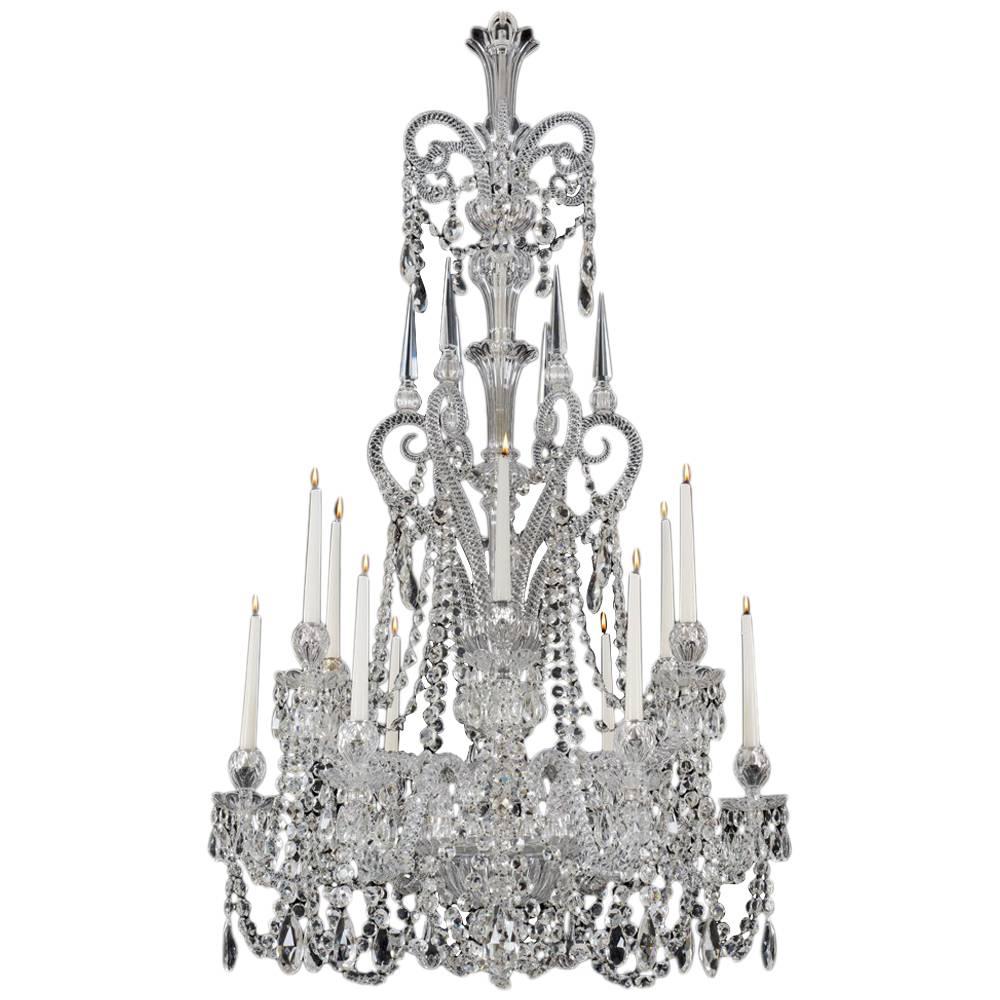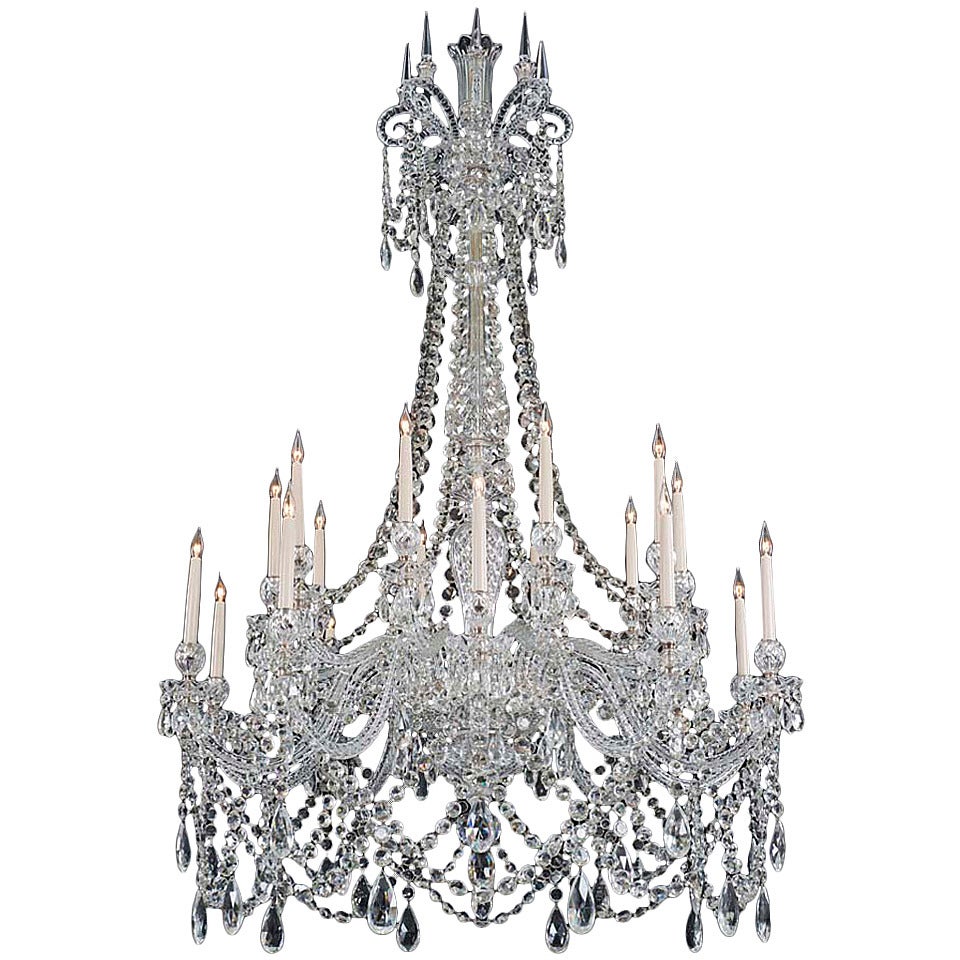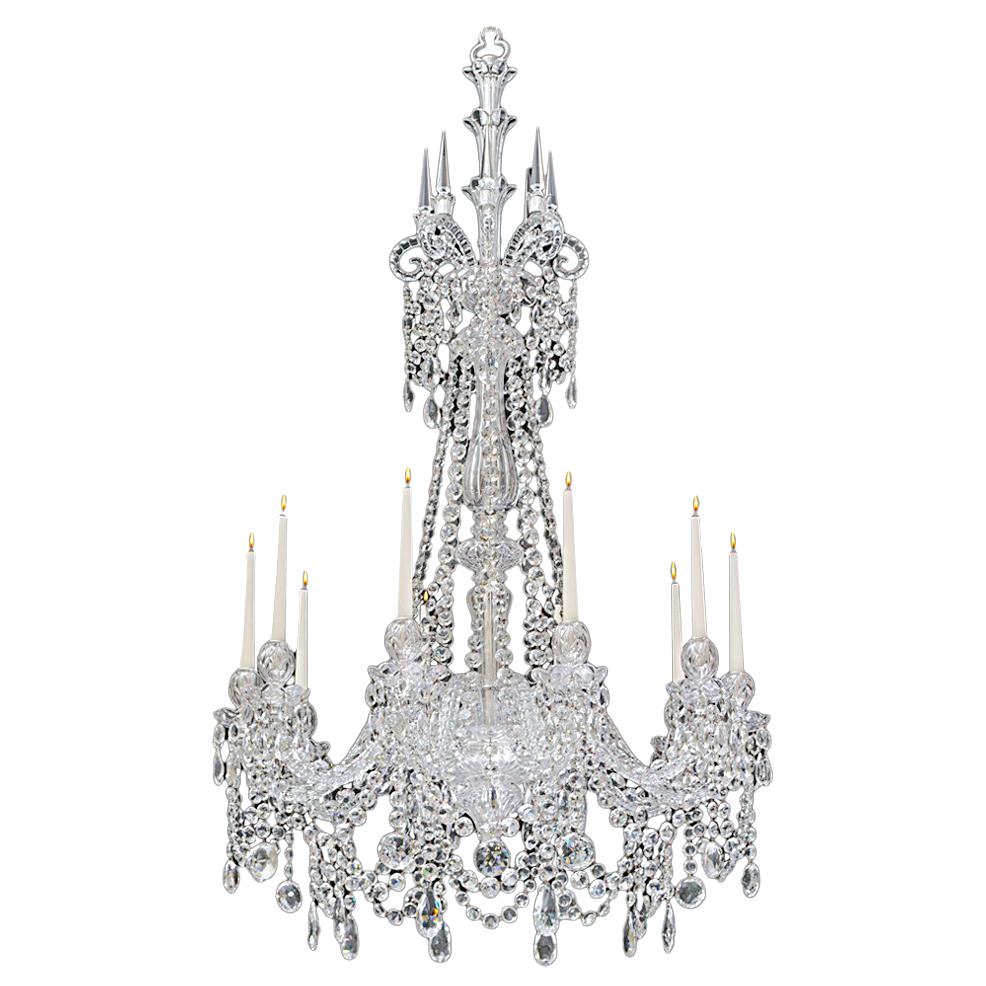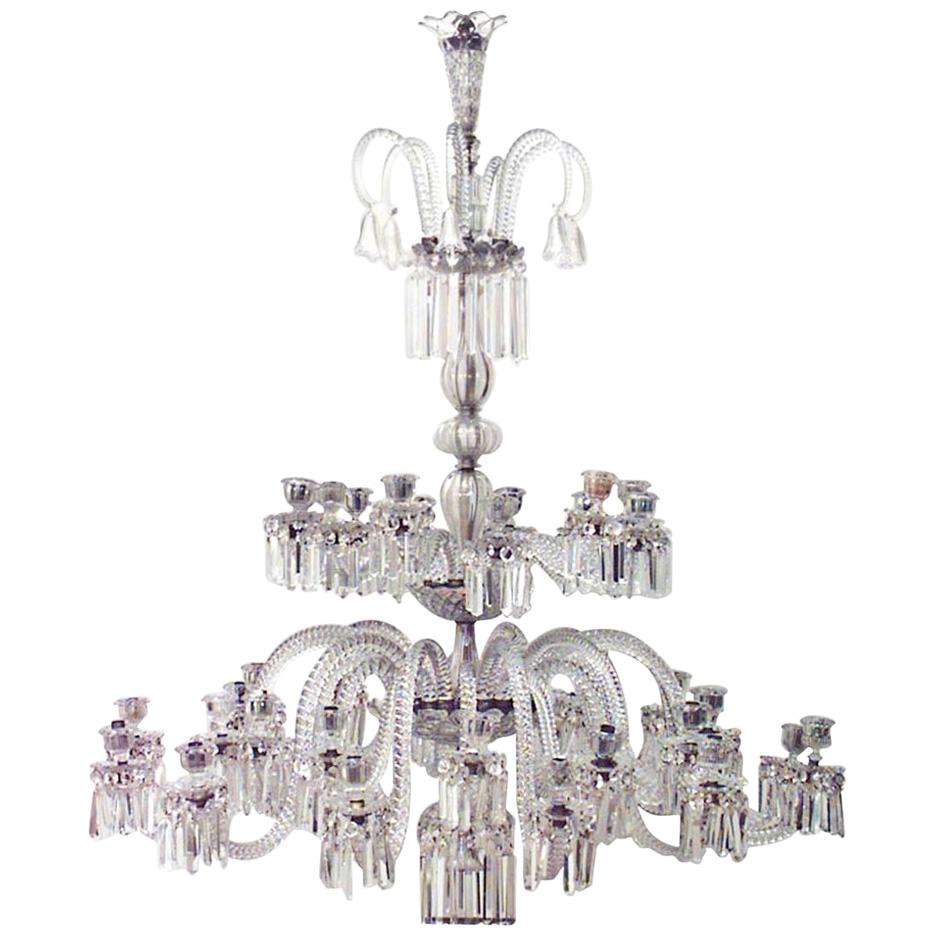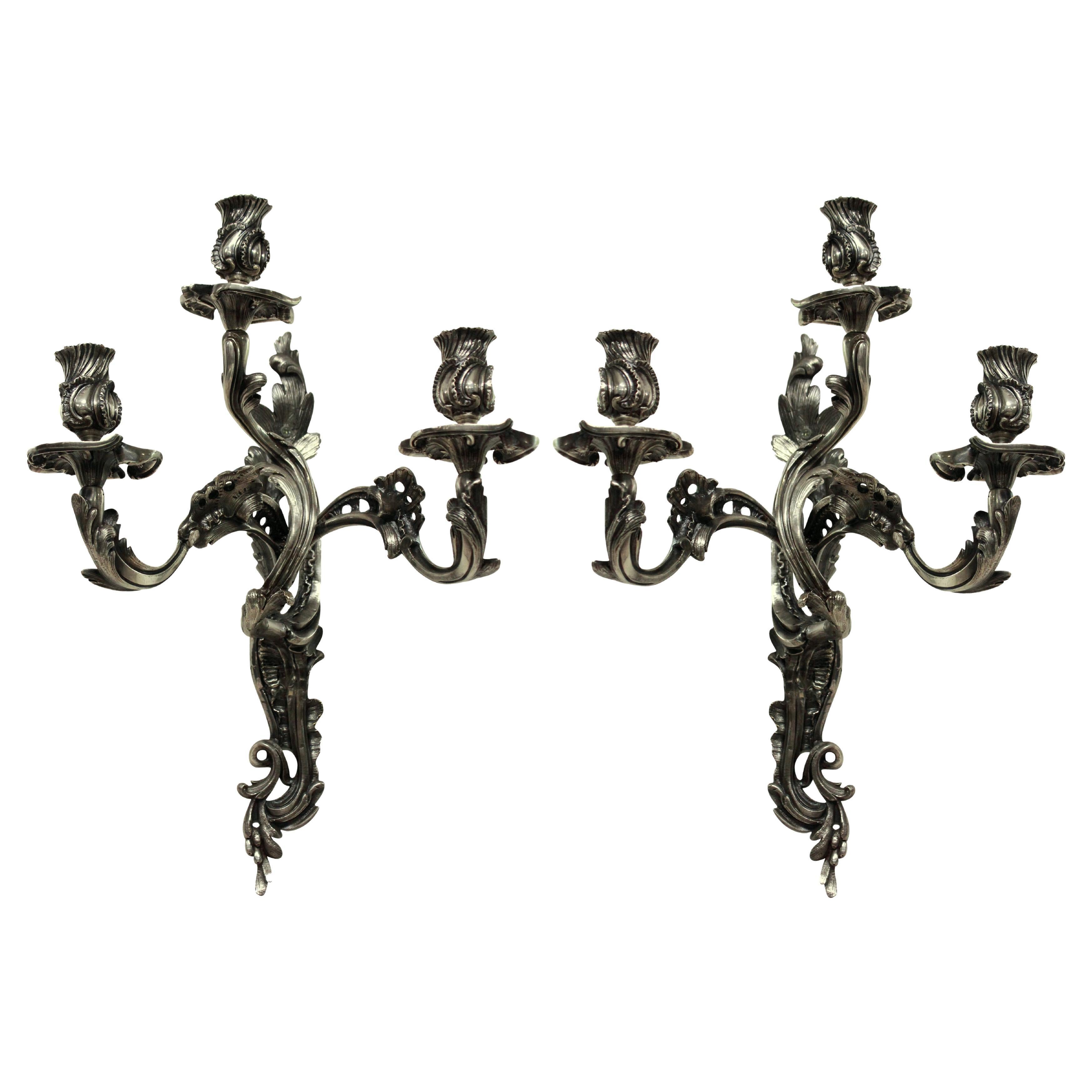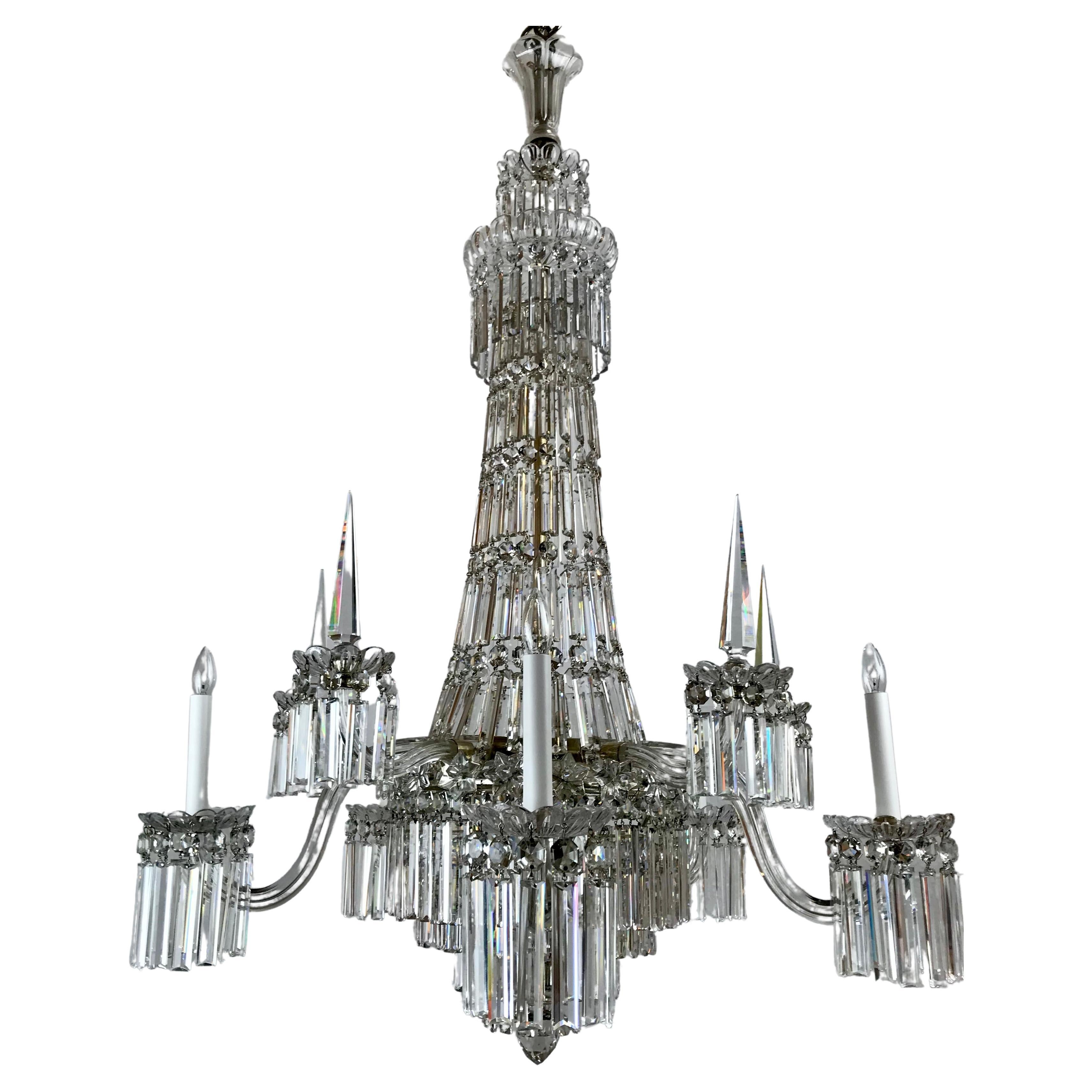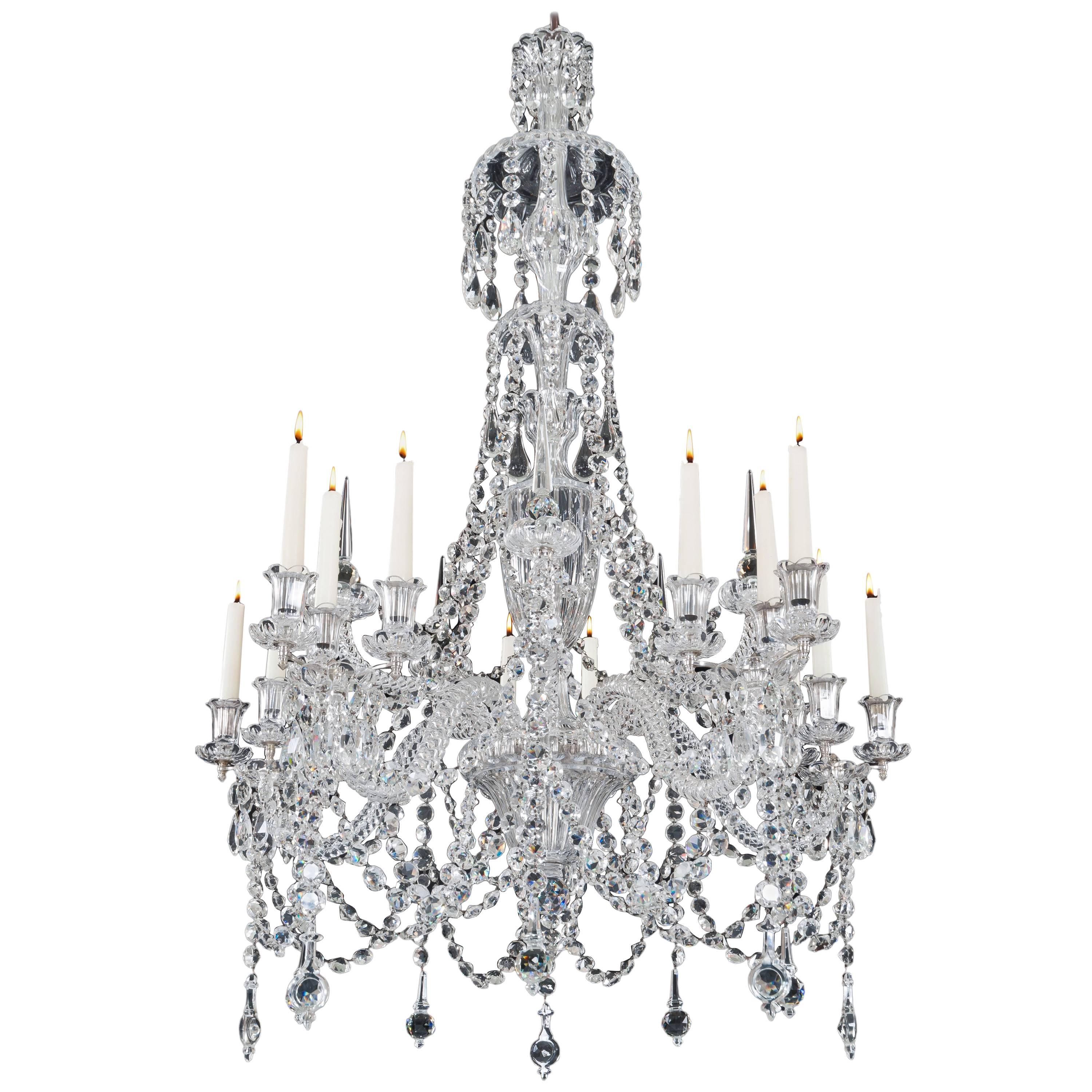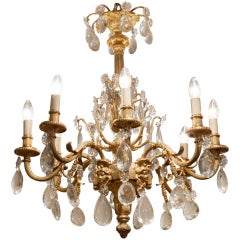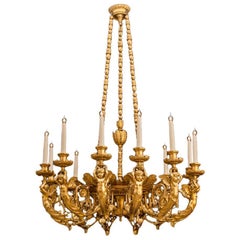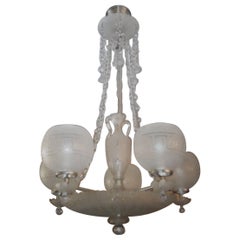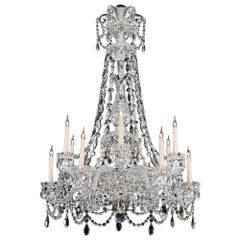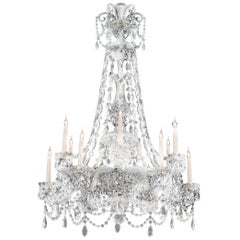
19th Century English Cut-Glass Chandelier Attributed to F. & C. Osler
View Similar Items
Want more images or videos?
Request additional images or videos from the seller
1 of 6
19th Century English Cut-Glass Chandelier Attributed to F. & C. Osler
About the Item
- Attributed to:F. & C. Osler (Maker)
- Dimensions:Height: 58 in (147.32 cm)Diameter: 36 in (91.44 cm)
- Style:Georgian (In the Style Of)
- Materials and Techniques:
- Period:
- Date of Manufacture:circa 1860
- Condition:
- Seller Location:London, GB
- Reference Number:Seller: 83151stDibs: LU95472811932
About the Seller
5.0
Recognized Seller
These prestigious sellers are industry leaders and represent the highest echelon for item quality and design.
Gold Seller
These expertly vetted sellers are highly rated and consistently exceed customer expectations.
Established in 1964
1stDibs seller since 2012
41 sales on 1stDibs
Typical response time: 2 hours
Associations
The British Antique Dealers' AssociationLAPADA - The Association of Arts & Antiques Dealers
More From This SellerView All
- 19th Century French Gilt Bronze and Cut Crystal Glass ChandelierLocated in London, GBA very fine chandelier in the Louis XV taste. Constructed utilizing finely cast, and chased gilt bronze, and handblown glass adornments and prisms of cut lead glass crystal; the ...Category
Antique 19th Century French Louis XV Chandeliers and Pendants
MaterialsBronze
- Italian 19th Century Gold Carved Wood ChandelierLocated in London, GBConstructed in carved gold leaf giltwood; from the central dished acanthus leaf dressed boss issue the twelve arms, each with winged amorini, and decorated with scrolled ironwork scr...Category
Antique 19th Century Italian Baroque Chandeliers and Pendants
MaterialsGiltwood
- 19th Century Walnut Serpentine Card Table Firmly Attributed to GillowsBy Gillows of Lancaster & LondonLocated in London, GBA walnut serpentine card table firmly attributed to Gillows Constructed using finely figured Circassian walnut, dressed with gilt bronze mounts; rising from slender kingwood banded ...Category
Antique Mid-19th Century English Louis XV Card Tables and Tea Tables
MaterialsBronze, Ormolu
- 19th Century Coromandel and Inlaid Table Attributed to Jackson & GrahamBy Jackson & GrahamLocated in London, GBA magnificent library table Attributed to Jackson & Graham Of free standing rectangular form, constructed in coromandel, with inlays in thuya, ebony, boxwood, and honeysuckle; the fluted legs rising from square brass castor-shod feet; the frieze housing two lockable drawers fitted with rare ‘tamper proof’ Chubb locks and having quadrant moulded cedar lined interiors; the platform having a central panel of beautifully chosen matched coromandel veneers, with an outer guard border of a running pattern of stylised anthemions; the ebony edges having a thumb nail moulding, circa 1865 The firm of Jackson & Graham established in 1836 by Thomas Jackson and Peter Graham at 37 Oxford Street London, and for the next fifty years produced predominately high quality furniture and represented Britain at many of the international exhibitions. Their clients included Queen Victoria, Napoleon III, the Grand Khedive of Cairo and the royal palace in Siam. They were particularly noted for their fine marquetry work, the use of Wedgwood plaques, rare woods, and fine casting of bronze mounts. They engaged the leading designers of the period, inter alia, Owen Jones, Bruce Talbert, Alfred Lorimer and Eugene Prignot. In the mid-1850s the workforce was recorded as 250, and by 1875, the company was employing 600 workers. They were feted exhibitors at many of the Great Exhibitions of the 19th century, and frequent prize winners. At the Paris International Exhibition of 1878, the furniture jury noted of them ‘ the workmanship is so perfect that even with the aid of a magnifying glass scarcely the slightest imperfection is to be found’. In 1885 the company was absorbed by Collinson and Lock, who continued their standard of excellence. Charles Chubb was apprenticed as a blacksmith before starting business as a ships’ ironmonger in Winchester. Jeremiah soon joined the business, and by 1818 the brothers had branched out into lockmaking, founding the famous Chubb Company. The business really got started when Jeremiah Chubb patented his new ‘detector lock’ in 1818. The lock was constructed so that if someone tried to pick it or open it with the wrong key it became inoperable. To make the lock work again the owner had to use a special key supplied with the lock. The aim of the detector lock was to prevent burglaries, and to warn the owner that someone had tried to break into their property. The lock soon became popular, and sales of the Chubbs’ products increased even more when they won a government competition to design a lock that could only be opened using its own key. After the invention of the detector lock, the Chubbs decided to move to Wolverhampton, which already had an established lock making industry. By 1838 they were making 28,000 locks a year at their Wolverhampton factory. Another product was added to the Chubb range in 1835 when a patent was taken out for a burglar resistant safe, and in 1837 the Chubb safe...Category
Antique 19th Century English Tables
MaterialsBrass
- 19th Century Marquetry Inlaid & Ormolu Table attributed to François LinkeBy François LinkeLocated in London, GBA Very Fine Marquetry Inlaid Occasional Table Firmly Attributed to François Linke This fine table, closely related to other examples by François Linke, is...Category
Early 20th Century French Side Tables
MaterialsOrmolu
- 19th Century Pair of Venetian Carved Figures attributed to Valentino BesarelBy Valentino Panciera BesarelLocated in London, GBA Splendid Pair of Venetian Figural Torchères Attributed to Valentino Panciera Besarel Of solid carved pine, waxed, blackened and beeswax-polished throughout. Each figure carved wit...Category
Antique 19th Century Italian Renaissance Revival Figurative Sculptures
MaterialsPine
You May Also Like
- 19th Century English Cut Crystal Chandelier, Signed F & C OslerBy F. & C. OslerLocated in Pittsburgh, PAThis six light chandelier by the renowned firm of F & C Osler, is of rare design and a first rate example the the glass cutters art! Originally gas powere...Category
Antique Mid-19th Century English Victorian Chandeliers and Pendants
MaterialsCrystal
- 19thc British Signed & Documented F&C Osler Cut Glass Gas to Electric ChandelierBy F. & C. OslerLocated in Opa Locka, FLMid 19thc British Neoclassical style Cut & Frosted Art Glass Gas Converted to Electric Chandelier. This piece is signed and documented [Museum]. Very rar...Category
Antique 1850s English Neoclassical Chandeliers and Pendants
MaterialsArt Glass
- Highly Important Mid Victorian Antique Chandelier Attributed to F. & C. OslerBy F. & C. OslerLocated in Steyning, West sussexA fine quality Victorian twelve-light cut glass and silvered mounted chandelier the flat diamond cut baluster stem surmounting by six thumb cut Sheppard crooks terminating with trump...Category
Antique 1860s British Victorian Chandeliers and Pendants
MaterialsCut Glass
- 19th Century English Cut Glass ChandelierLocated in London, GBA large and impressive antique English cut-glass chandelier, having prism pendant canopy above graduated chains of double star prisms. The chandelier, fitted with six candle-arms wit...Category
Antique Mid-19th Century English Victorian Chandeliers and Pendants
MaterialsCut Glass
- Large 19th Century English Cut-Glass ChandelierLocated in London, GBA large English cut-glass chandelier of good quality. Of six down-swept and six up-swept arms, decorated heavily with swags and pendant drops.Category
Antique 19th Century English Chandeliers and Pendants
MaterialsCut Glass
- Fine Twelve-Light Cut-Glass Chandeliers by F&C OslerBy F. & C. OslerLocated in Steyning, West sussexAn important cut-glass twelve-light chandeliers by F&C Osler. The flute and slice cut baluster stem centred by six rope twisted reversed crooks these terminating with thumb cut coll...Category
Antique 1870s English Victorian Chandeliers and Pendants
MaterialsSilver Plate
